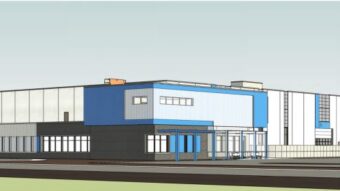“Transformation” is the current buzzword when discussing the regional industrial market as it continues to navigate a delicate balance between rising vacancies, cautious landlords and a surge in speculative development.
As the market persists in its cyclical ebb and flow, change is unavoidable. But while navigating this evolution comes with a degree of uncertainty, it doesn’t necessarily imply negativity, as highlighted throughout this issue and supported by reports from leading firms like Savills and JLL.
Firstly, Savills’ reported that while vacancy rates rose by 40 basis points to 5.1%, the resilience of landlords in maintaining face rents is notable. That said, despite the five-quarter trend of rising or stable vacancy, landlords appear cautious, opting for a wait-and-see approach rather than aggressive renegotiations. The slowing leasing activity, particularly among large occupiers, has contributed to a landscape where concessions, including tenant improvement allowances and increased flexibility, are becoming more prevalent.
Similarly, the development scene also reveals a pronounced slowdown as a response to uncertain demand and heightened interest rates. However, the cold storage segment in the Midwest is poised for growth, with built-to-suit developments expected to rise to meet the heightened demand in this sector. Additionally, the sublease market is experiencing an influx, adding over one million net square feet in the Q3 alone, including several listings exceeding 100,000 square feet.
Savills also reported that capital markets, affected by high-interest rates, are exhibiting signs of recovery. The I-55 Corridor submarket witnessed notable improvement in the Q3, with Sarofim Realty Advisors’ acquisition of a 550,000-square-foot portfolio in Hodgkins marking a significant transaction at $44.6 million, suggesting that, despite challenges, the industrial sales market is moving towards revitalization.
JLL’s report presents a parallel narrative with a spotlight on Chicago’s delivery of 12.8 million square feet in Q3, marking the highest volume since Q1 1999. Anticipation of another 12.6 million square feet by year-end, with 75% being speculative, contributes to a surge in supply. This surge, predominantly speculative in nature, has influenced the vacancy rate, with increased by 75 basis points to 3.8%. Net absorption remains positive at two million square feet, driven by significant moves from Target and Amazon rather than new tenant demand.
Leasing activity in Q3, however, witnessed a substantial drop to 4.7 million square feet, reflecting weaker demand, especially in the big box segment, where no new leases were signed. Despite this, asking rents experienced modest growth, rising from $6.98 per square foot net in Q2 to $7.05 per square foot in the current quarter.
The capital markets scene, as highlighted by JLL, showcases three portfolio sales in Q3, with IDI Logistics’ four-building portfolio sale in the I-80 Corridor to EQT Exeter standing out at $98,900,000. Looking ahead, speculative development completion in Q4 is expected to impact both vacancies and rents. The manufacturing sector, driven by the surge in demand from EV battery and car manufacturers, is a bright spot in an otherwise complex landscape.




